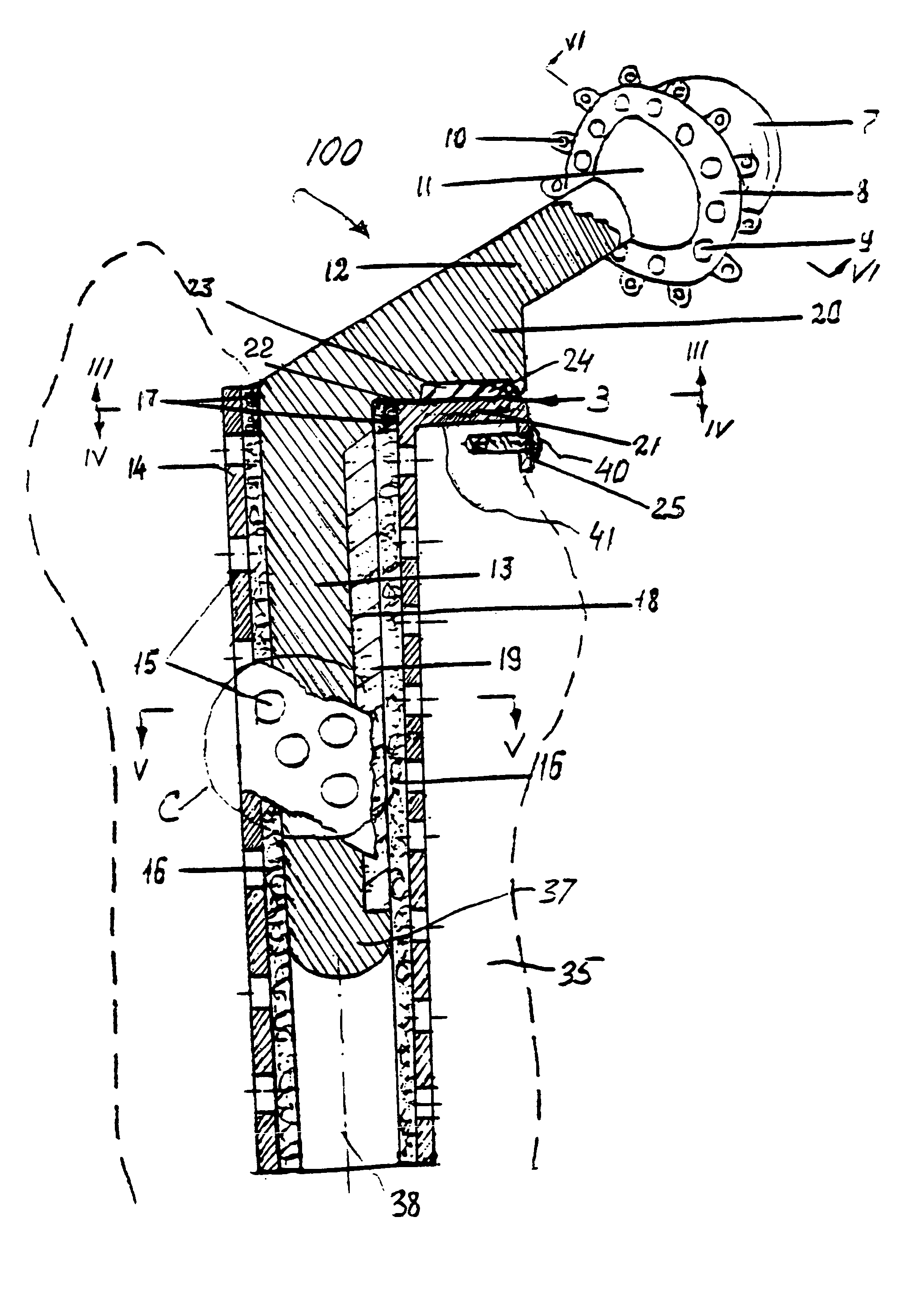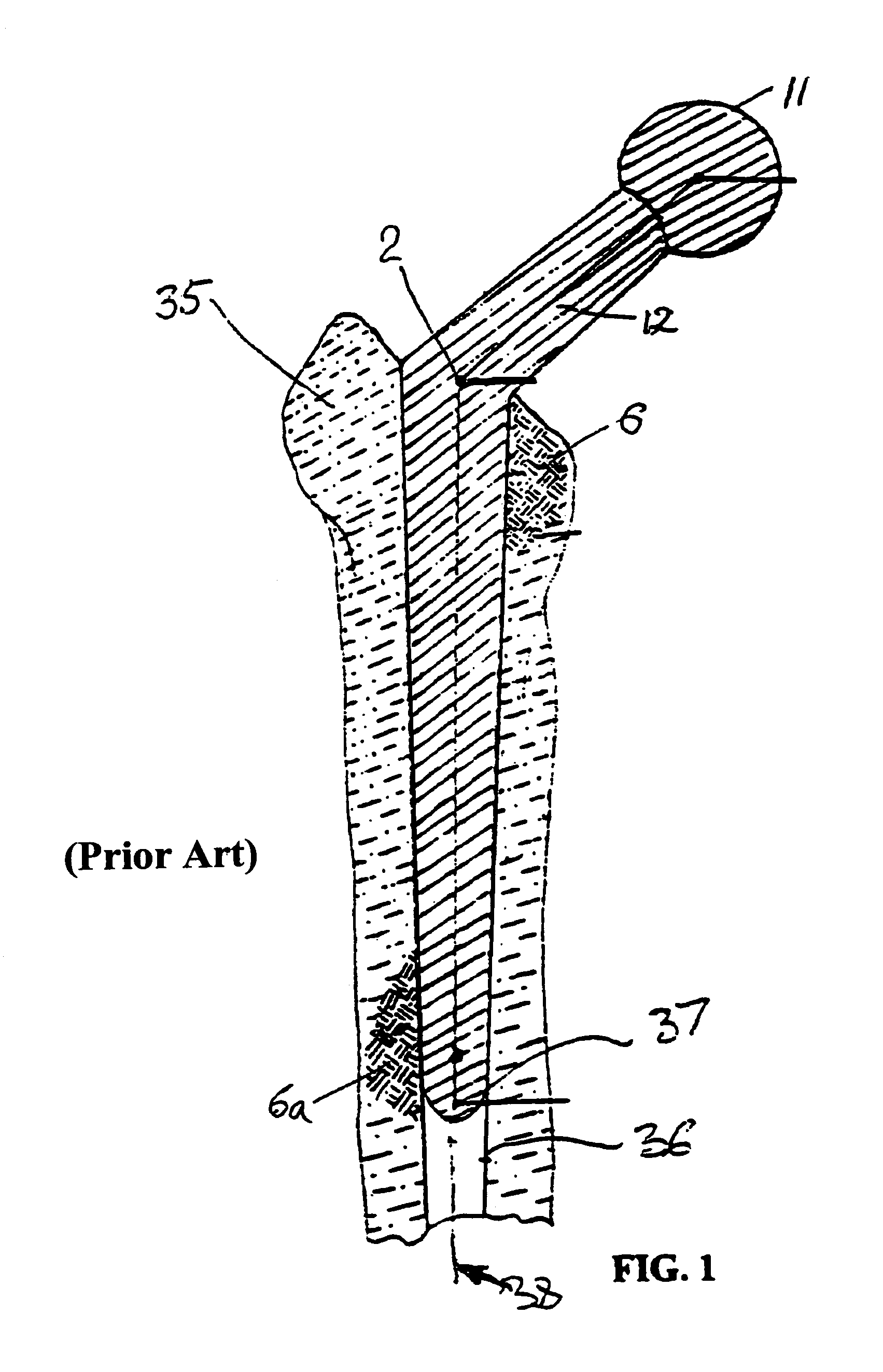Hip prosthesis
a prosthesis and hip technology, applied in the field of hip prosthesis, can solve the problems of weakening the bond between the bone and the prosthesis, and the stem displacement is greater than the natural displacement of the stem, so as to reduce the friction during rotation, minimize the formation of granules, and ensure the inventive structure is not compromised.
- Summary
- Abstract
- Description
- Claims
- Application Information
AI Technical Summary
Benefits of technology
Problems solved by technology
Method used
Image
Examples
Embodiment Construction
[0026]Referring to FIGS. 1–2, the anatomical structure of the hip joint includes the femur diaphysis, further referred to as a bone 35, neck and head 11. If a situation requires the hip replacement, it is performed by removing the neck, forming a channel 36 within the bone 35 and introducing a stem 13 (FIG. 2) of a prosthesis 100 into the channel 36. Formed integrally with the stem 13 is a neck portion 12 of the prosthesis 100, which extends angularly from the stem 13 into a cup 7 that is attached to the head of the bone.
[0027]As follows from the clinical practice, loading of the prosthesis cup leads to the greatest bone resorption of the femur diaphysis in its upper medial part 34, as this is where the most of the body weight load is applied. The prosthesis stem 13 and particularly its distal end 37, are pushed laterally away form the median plane 39 (FIG. 4), as shown by an arrow “38” in FIG. 1 due to the inherent motion of the bone 35 occurring as a result of applied loads.
[0028]...
PUM
 Login to View More
Login to View More Abstract
Description
Claims
Application Information
 Login to View More
Login to View More - R&D
- Intellectual Property
- Life Sciences
- Materials
- Tech Scout
- Unparalleled Data Quality
- Higher Quality Content
- 60% Fewer Hallucinations
Browse by: Latest US Patents, China's latest patents, Technical Efficacy Thesaurus, Application Domain, Technology Topic, Popular Technical Reports.
© 2025 PatSnap. All rights reserved.Legal|Privacy policy|Modern Slavery Act Transparency Statement|Sitemap|About US| Contact US: help@patsnap.com



